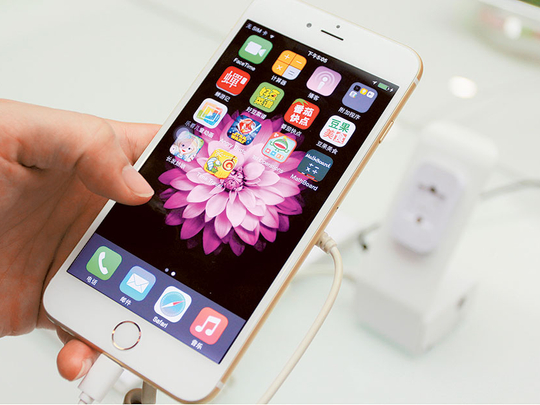
Dubai : Smartphones have been getting more expensive over the last two years with manufacturers focusing on speed, display size and cameras to warrant sky-high prices.
But have prices peaked? No, says industry experts.
Isam Arshad, research analyst at Euromonitor International, said that the prices are expected to go up at an annual compound growth rate of five per cent over the next five years.
While no one is making specific predictions about Apple, Samsung or any of the other major smartphone makers, the math shows that a top-of-the-line smartphone, which costs as much as $1,600 (Dh5,875) today, could reach $2,000 (Dh7,344) by 2023.
Arshad says that Apple has set a benchmark, followed by Samsung, Huawei and Oppo. Apple’s iPhone X was the first smartphone in the industry to cross $1,000, but was quickly followed by the Samsung Note 9, Oppo’s Find X and the Huawei Mate 2o Pro.
“After the $1,000 mark, Apple never lowered its prices as they have their own niche markets and loyal customers. Huawei, similar to Samsung, started with lower price points and cleared their own space. After that, Huawei started bringing premium smartphones because they are getting a positive response. All the three top brands are increasing the prices of their devices every year and they are experimenting with the prices,” he said.
Is there a maximum limit on prices?
Daniel Gleeson, senior analyst for consumer technology at Ovum, said smartphones share many similarities with fashion items like watches or jewellery, and as such, there is no hard upper limit for the price of smartphones. As long as brands like Apple can command a high customer loyalty and maintain a very high-value brand, he said that then manufacturers can continue to edge prices up while premium phones are also aided by finance plans that are offered by operators and increasingly being offered by the manufacturer themselves too.
“There is no hard cap on prices really, but instead companies will find that gradually fewer and fewer people are buying their more expensive phones. Apple is making a calculated trade-off with the newest high priced devices, that will still have enough customers to generate higher revenues,” he said.
However, he said that is the key issue right now for Apple – it knows that there is little more growth it can have in terms of the number of customers while maintaining its premium price strategy, so the only route to get more revenue is to push prices higher. Gleeson said that the iPhone X was a big change compared to the iPhone 7 or 8 in physical design as well as technology like FaceID and those changes were instrumental in driving demand. The availability of cheaper options - iPhone XR - is also a key factor in keeping shipment volumes up while the top end sales increase in price, he added.
Ovum expects the iPhone XR will have a massive impact for Apple this year as it brings the iPhone X form factor and technology to a more affordable price point. However, he said that there are some price increases that come with the additional processing and battery requirements of AI, but the biggest price increase in recent years has been at the adoption of OLED (organic light emitting diode) screens which are much more expensive than the older LCD (liquid crystal display) technology. But Roberta Cozza, research director at Gartner, does not expect the prices to keep on going higher and higher for a foreseeable future.
What's next for the paying customer?
According to Gartner, the current average selling price of a smartphone is around $1,200.
“Next year, foldable phones are coming out and it is going to be expensive. However, I don’t think a user will open his wallet for $1,500 or $2,000 unless they see a benefit in owning it. I still would like to see what will be the use cases for a foldable phone. If a foldable phone is going to cost around $2,000, I think the brands will struggle to sell,” she said.
Sales of smartphones are better than Gartner’s forecast but Cozza believes that it is going to be difficult even for the big brands to justify such a high price. “Some people may be willing to pay a higher price if there is a ground-breaking technology but we don’t see that in the near future. However, there will be people with higher disposable income that are interested in spending more for a brand that has a better display, design and the camera,” she said. The average selling price of a smartphone may go higher next year, she said and much will depend on the foldable phone and how much demand it will create.
After 2019 or 2020, the prices may remain stable as lack of innovations is lengthening the replacement cycles of smartphones. Arshad said that most of the top brands used to launch one premium model every year but now they are launching two or three models with different price points. “People are willing to buy a phone if it is reasonable and they are also ready to go for older models as the prices will be reasonable,” he said.
“A person who earns less than Dh8,000 a month and if he buys an expensive phone, the replacement cycle is two years or more. A person who earns more than Dh15,000 a month is more likely to change the phone every year. The reason for replacement cycle getting longer is due to extended warranties,” he said.












